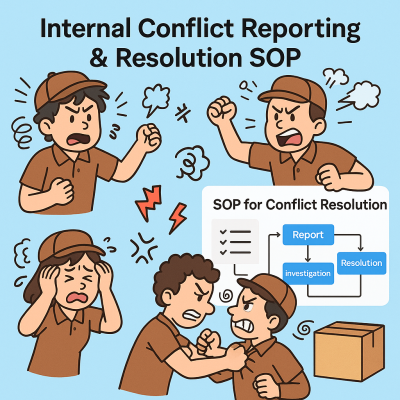Complete the tests.
Internal Conflict Resolution in Courier Organization

Internal Conflict Scenario – Rider vs. Manager
Background:
A customer based in Lekki placed a last-minute pickup request at 2:15 PM. The operations manager checked the dispatch tracking system and saw that Rider (Idris) had just completed a delivery in Ikate, only 5 minutes from the pickup location.
The manager attempted to call Rider Idris three times between 2:18 PM and 2:25 PM to assign the job. Idris did not pick up. The pickup was reassigned to another rider who arrived 45 minutes late, resulting in an angry customer complaint and a lost client.
Conflict Sparked:
When Rider Idris returned to base, the manager confronted him aggressively in front of other staff:
Manager (angrily): “Why don’t you ever pick your calls? You cost us a client today. You just do what you like!”
Rider Idris (defensive): “You don’t talk to me with respect. I was busy finding a location. My battery was low. I’m not a robot!”
Both sides raised voices. Other riders gathered. Operations paused for 40 minutes as tempers flared. Idris threatened to quit if “disrespected publicly” again. The manager insisted he’d “write a query” for negligence.
Take this short course to see how the Conflict Reporting & Resolution SOP Would Apply.
Why You Should Enrol
Conflicts between team members, especially in high-pressure logistics environments, are inevitable — but unmanaged conflict can damage morale, slow down operations, and lead to avoidable mistakes.
Conflict left unaddressed leads to custo mer service lapses, delays, and team breakdowns. This short course equips your team to handle interpersonal tension professionally without escalation, ensures your organization has proof and process if legal or HR issues arise, and enhances your brand’s internal accountability and professionalism
Who This Course Is For:
-
Dispatch riders
-
Sales and operations teams
-
Supervisors and team leads
-
Admin/HR personnel in courier/logistics firms
-
Small courier business owners who manage staff directly.
What You’ll Learn:
-
What qualifies as an internal conflict in courier/logistics operations
-
Types of workplace conflict: rider-to-rider, rider-to-sales, sales-to-admin, etc.
-
Steps to report a conflict within the SOP framework
-
The difference between toxic gossip and formal conflict reporting
-
Mediation techniques for operations supervisors and team leads
-
Documentation templates for incident reporting and resolution tracking
-
Escalation flowchart: from verbal reports to HR intervention
-
How to create a blame-free, solution-focused conflict culture
Course Outcomes:
By the end of this course, participants will be able to:
-
Use a standard format to report and respond to internal issues
-
Avoid personal attacks or emotional outbursts in conflict situations
-
Escalate issues properly when initial mediation fails
-
Maintain a respectful and performance-focused work environment
-
Implement a transparent, documented conflict resolution process
What you Get
-
Conflict Escalation Flowchart
-
Sample Incident Log
-
Roleplay Scenarios (for in-house team training)
-
Delivery: Online video lessons + SOP template download
-
Certificate (upon completion of module + short quiz + assignment)
| Certificate | Price |
|---|
